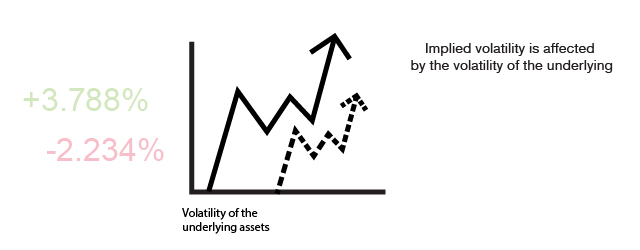Guide for Beginners

-
What is implied volatility?
Implied volatility is the forecast of the market on the future volatility of the underlying assets.
In general, when the underlying assets have high volatility, the implied volatility of the relevant warrant will also be high; when the underlying assets have low volatility, the implied volatility of the relevant warrant will be low.
-
How does warrant’s implied volatility change?
When the market expects that the underlying assets will become volatile, or the demand for the derivatives of the underlying assets increases, the implied volatility of the relevant warrant will also increase, and vice versa.
Because the warrant issuer will use options to hedge against its warrants, when the implied volatility of the options changes, the warrant issuer will reflect market conditions on the warrants.
-
How does implied volatility affect the warrant price?
When the implied volatility of a warrant increases, the warrant price will be positively affected, whether it is call warrant or put warrant; when the implied volatility decreases, the warrant price will be negatively affected.
Call warrants Put warrants Market prediction Bullish Bearish When the implied volatility increases Theoretical price rises Theoretical price rises When the implied volatility decreases Theoretical price drops Theoretical price drops In certain situations, when the price of the underlying assets increases but the implied volatility of the warrant decreases, the theoretical increase in the call warrant price brought about by the increase in the price of the underlying assets will be partially offset by the theoretical decrease caused by the decrease in the implied volatility. As a result, the price of the warrant does not increase at the same rate.

